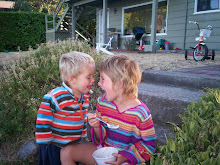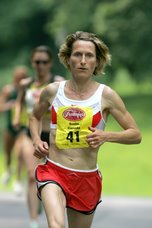
Run For Joy: 10 ways to energize your life and sport.
1. At the start of the season write down your goals. Write down what you want to achieve, not what you think you should do. This is important to ponder. If your goals do not line up with what you really want, then you will be far less committed than if you embrace your true desire. If you sign up for Ironman because your buddies did, but you really want to test yourself over short course, those long rides are going to seem endless and even pointless.
2. Once you have your goals written down (and you should write them down) then you need to look at your priorities in life and decide whether your goals match your priorities. I have coached several people to Ironman who were clear about it being a 12-month commitment that they had worked out with their families. If you have chosen Ironman, yet you know you will only be able to train on a very limited basis for the distance, it is worth adjusting your outcome goals to match this. If your priorities do not line up with your goals, then you will be frustrated and grumpy about your progress. It is ultimately more enjoyable to be fully emotionally present at your daughter’s Saturday afternoon soccer game than to be worried about the training miles that you aren’t getting in.
3. Decide to be flexible and adopt an easy-going attitude about your sport. Plan for your goals to happen by setting short-term goals, a training schedule, or at least a weekly plan that includes time that you can train. Having a personal coach and finding workout partners are great ways to make your training happen and to make the most of limited time. At the same time, busy people with demanding jobs and especially parents with small children, need to be flexible with their lives. Being able to accept that your children are sick and need you, or that you have to travel to a business meeting is an easier task if your priorities are clear and you know that over the long haul, you are being consistent with your training.
4. Be consistent about sleep. For instance, if you have an infant, or do shift work, you likely do not get enough sleep, so you need to make the most of the sleep that you get. Going to sleep and waking up at the same time on a regular basis will ensure you are as rested as you can be. Be aware of the things that will interfere with a good sleep too: alcohol, caffeine and chocolate in the evening, though they may be part of your daily treat schedule, can detract from a good rest.
5. Understand your energy patterns and organize your day and train accordingly. Most of us have energy highs and lows in the day, parts of the day where we feel most alert and energized and those where we just want to take a nap. If you can, schedule your training around the times when you feel you are at your best, especially if you do only one workout a day. If you routinely train at night and have trouble getting to sleep, change your workout time and notice how it affects your training and your sleep patterns. Getting into a working routine with your sleep and your physical activity is part of optimal training.
6. Go out and play. Participation in sport is playtime: adult fun in a life of responsibility, jobs, mortgages, and other such seriousness. Be one of the athletes who have tapped into their inner strength—competing with a sense of happiness as well as determination is how you perform at your best.
7. Eat well and stay hydrated. Learn as much as you can about good sports nutrition, including what to eat and when, and what proportion of your caloric intake should be protein, carbohydrates and fats. Without being obsessive with your diet, make choices that feed your body and your soul, providing you with adequate energy to support your active lifestyle. Instead of those empty calorie junk foods, replace lost calories with a high nutrition alternative. A Power Bar Pria with your morning coffee provides treat factor with a healthy doss of nutrition.
8. Take care of your toys! Be proactive about your equipment and be as organized as you can so that you are always ready to go. There is nothing more aggravating than finding a flat on your bike when you have an hour to ride. Stock up at the bike store with spare tubes and any equipment you may need and keep it on hand by your bike. Have a race day equipment list and print it out. Organize your gear the night before a race. Have a spare pair of your favourite runners on hand.
9. Stretch your hamstrings and breathe! Take a Yoga class and reap the many benefits for athletes. Through yoga you can learn to tap into and increase your core strength, the strength that you need to initiate all other movement in a balanced and efficient way. You will stretch out tired muscles and strengthen and lengthen your back after all the pounding of running. As a refreshing change from competing there are no performance incentives in yoga besides having a stronger more flexible body, a suppler spine and more relaxed mental outlook. Learning how to really breathe will help in your racing and in your busy life, and most athletes feel rejuvenated and enriched by the mind and body connections of yoga.
10. Be gentle with yourself. Look at your life and your sport as a work in progress. Each challenging opportunity opens the door for further growth. If your time and energy are limited, make every moment count. On a day that you are tired, give yourself credit for getting out there, savour the sunshine, the forest, the camaraderie of your peers instead of focussing on how slow you feel. Some specificity is better than sitting on the couch. If your current training routine is not working for you, if your life feels unbalanced or hectic, accept that and move on. Re-frame the problem into an opportunity. What would work better now? What would you change if you could do it again?
Participation in sport is a rewarding path in life, especially to those who view their training as a process of self-discovery and personal achievement. If you have clear priorities and intentions and are living out your responsibilities to yourself and the other people in your life, then your training and racing is something that will add joy your life.
Lucy
1. At the start of the season write down your goals. Write down what you want to achieve, not what you think you should do. This is important to ponder. If your goals do not line up with what you really want, then you will be far less committed than if you embrace your true desire. If you sign up for Ironman because your buddies did, but you really want to test yourself over short course, those long rides are going to seem endless and even pointless.
2. Once you have your goals written down (and you should write them down) then you need to look at your priorities in life and decide whether your goals match your priorities. I have coached several people to Ironman who were clear about it being a 12-month commitment that they had worked out with their families. If you have chosen Ironman, yet you know you will only be able to train on a very limited basis for the distance, it is worth adjusting your outcome goals to match this. If your priorities do not line up with your goals, then you will be frustrated and grumpy about your progress. It is ultimately more enjoyable to be fully emotionally present at your daughter’s Saturday afternoon soccer game than to be worried about the training miles that you aren’t getting in.
3. Decide to be flexible and adopt an easy-going attitude about your sport. Plan for your goals to happen by setting short-term goals, a training schedule, or at least a weekly plan that includes time that you can train. Having a personal coach and finding workout partners are great ways to make your training happen and to make the most of limited time. At the same time, busy people with demanding jobs and especially parents with small children, need to be flexible with their lives. Being able to accept that your children are sick and need you, or that you have to travel to a business meeting is an easier task if your priorities are clear and you know that over the long haul, you are being consistent with your training.
4. Be consistent about sleep. For instance, if you have an infant, or do shift work, you likely do not get enough sleep, so you need to make the most of the sleep that you get. Going to sleep and waking up at the same time on a regular basis will ensure you are as rested as you can be. Be aware of the things that will interfere with a good sleep too: alcohol, caffeine and chocolate in the evening, though they may be part of your daily treat schedule, can detract from a good rest.
5. Understand your energy patterns and organize your day and train accordingly. Most of us have energy highs and lows in the day, parts of the day where we feel most alert and energized and those where we just want to take a nap. If you can, schedule your training around the times when you feel you are at your best, especially if you do only one workout a day. If you routinely train at night and have trouble getting to sleep, change your workout time and notice how it affects your training and your sleep patterns. Getting into a working routine with your sleep and your physical activity is part of optimal training.
6. Go out and play. Participation in sport is playtime: adult fun in a life of responsibility, jobs, mortgages, and other such seriousness. Be one of the athletes who have tapped into their inner strength—competing with a sense of happiness as well as determination is how you perform at your best.
7. Eat well and stay hydrated. Learn as much as you can about good sports nutrition, including what to eat and when, and what proportion of your caloric intake should be protein, carbohydrates and fats. Without being obsessive with your diet, make choices that feed your body and your soul, providing you with adequate energy to support your active lifestyle. Instead of those empty calorie junk foods, replace lost calories with a high nutrition alternative. A Power Bar Pria with your morning coffee provides treat factor with a healthy doss of nutrition.
8. Take care of your toys! Be proactive about your equipment and be as organized as you can so that you are always ready to go. There is nothing more aggravating than finding a flat on your bike when you have an hour to ride. Stock up at the bike store with spare tubes and any equipment you may need and keep it on hand by your bike. Have a race day equipment list and print it out. Organize your gear the night before a race. Have a spare pair of your favourite runners on hand.
9. Stretch your hamstrings and breathe! Take a Yoga class and reap the many benefits for athletes. Through yoga you can learn to tap into and increase your core strength, the strength that you need to initiate all other movement in a balanced and efficient way. You will stretch out tired muscles and strengthen and lengthen your back after all the pounding of running. As a refreshing change from competing there are no performance incentives in yoga besides having a stronger more flexible body, a suppler spine and more relaxed mental outlook. Learning how to really breathe will help in your racing and in your busy life, and most athletes feel rejuvenated and enriched by the mind and body connections of yoga.
10. Be gentle with yourself. Look at your life and your sport as a work in progress. Each challenging opportunity opens the door for further growth. If your time and energy are limited, make every moment count. On a day that you are tired, give yourself credit for getting out there, savour the sunshine, the forest, the camaraderie of your peers instead of focussing on how slow you feel. Some specificity is better than sitting on the couch. If your current training routine is not working for you, if your life feels unbalanced or hectic, accept that and move on. Re-frame the problem into an opportunity. What would work better now? What would you change if you could do it again?
Participation in sport is a rewarding path in life, especially to those who view their training as a process of self-discovery and personal achievement. If you have clear priorities and intentions and are living out your responsibilities to yourself and the other people in your life, then your training and racing is something that will add joy your life.
Lucy






